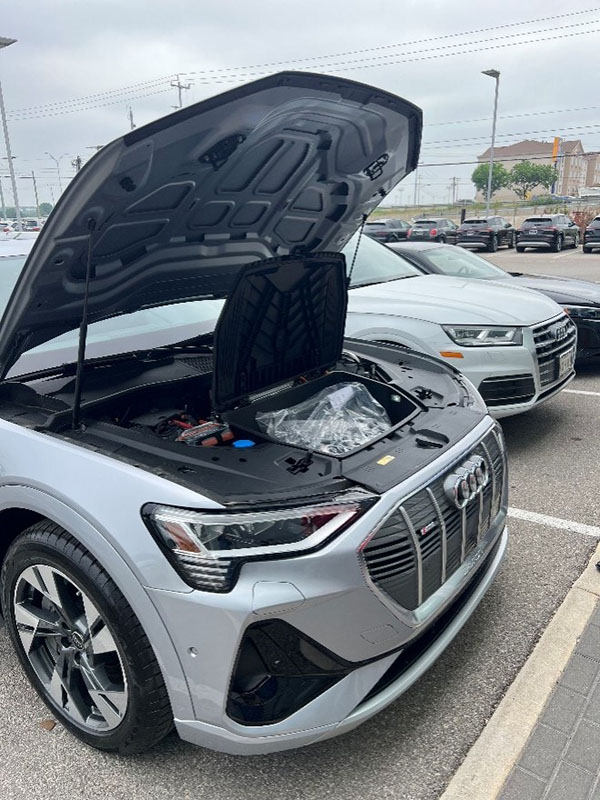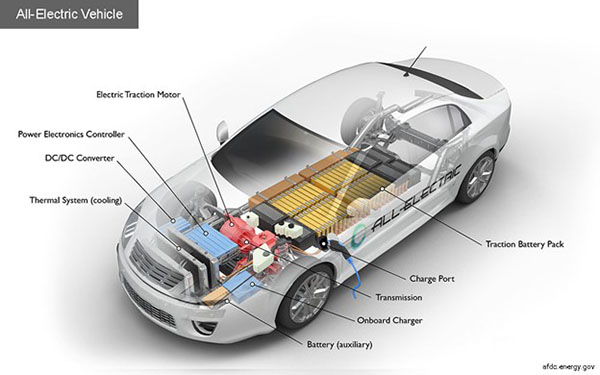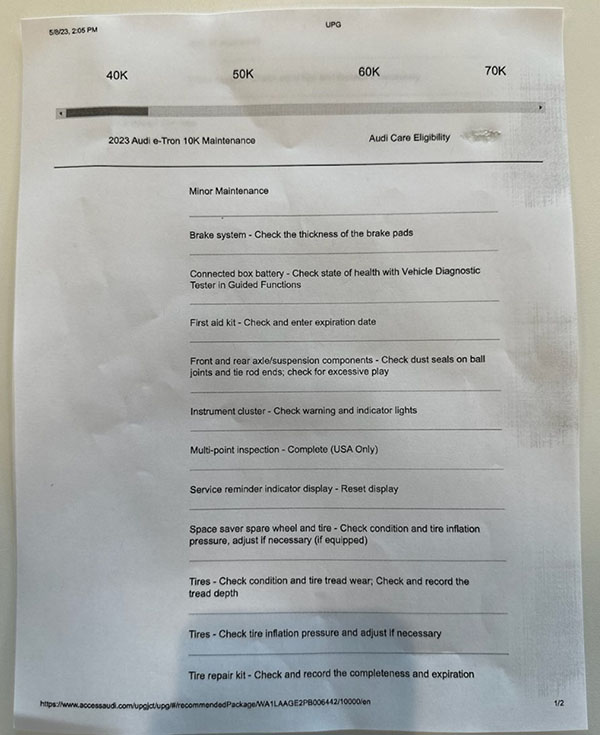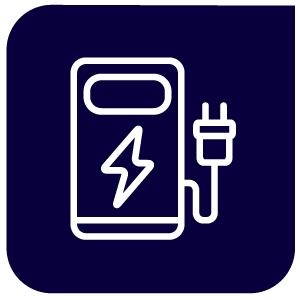My first thought when they popped the hood and I looked down was, “Hey, I don’t have an engine!” That was how I discovered my car’s charging cables are stored in an area that resembles a mini trunk in the front of my vehicle…and there is, indeed, no engine.

Yes, I was such an EV rookie that I didn’t even realize EVs don’t have engines. This led me to wonder, “If there’s no engine, what are the unique parts in an EV?”
In the third blog post in this EV series, I’ll try to save you the embarrassment of asking what might be construed as “uninformed” questions. It all starts with what parts are unique to EVs.
Key components of an electric vehicle
In doing my research to write this, I noticed that most lists of EV components appeared in alphabetical order. I reordered them to help me understand how they work together to make the vehicle operate. If you want the alphabetical list, there’s a link at the end of this section.
So, guess what…there are actually TWO batteries in my EV! Yes, my mind was blown, too. Here’s what they are:
- Traction battery pack: This is the star of the show. This battery stores electricity for use by the electric traction motor, so it’s what really makes the vehicle go. When you plug in your EV to charge, this is the battery that’s being charged.
- Auxiliary battery: This battery powers the vehicle’s accessories, such as electric seats and mirrors, audio devices, etc.
But there’s a lot more than just batteries. Battery-adjacent components include:
- Charge port: This allows the vehicle to connect to an external power supply in order to charge the traction battery pack. It’s how you “plug in” your vehicle.
- Onboard charger: This brings the power into the system. It takes incoming AC electricity supplied via the charge port and converts it to DC power for charging the traction battery. It also communicates with the charging equipment and monitors battery characteristics such as voltage, current, temperature, and state of charge.
- DC/DC converter: This device converts higher-voltage DC power from the traction battery pack to the lower-voltage DC power needed to run vehicle accessories and recharge the auxiliary battery. I really should have paid more attention when we learned about electricity in school. I do, however, pay attention to movies that star David Bowie. Thus, I saw “The Prestige” (2006) and learned that Bowie’s character, Nikola Tesla, was the inventor of AC power, and Thomas Edison was the inventor of DC power (and seemed like a kind of questionable dude).
But what exactly makes the car go?
- Electric traction motor: Using power from the traction battery pack, this motor drives the vehicle’s wheels. Some EVs use motor generators that perform both the drive and regeneration functions. An example of a regeneration function is when you hit the brakes and capture energy back into the vehicle.
- Power electronics controller: This unit manages the flow of electrical energy delivered by the traction battery, controlling the speed of the electric traction motor and the torque it produces. This is also the bad boy that consumes multiple miles of charge when you put the pedal to the metal on the freeway.
- Thermal system (cooling): This system maintains a proper operating temperature range of the electric motor, power electronics, and other components.
- Transmission (electric): The transmission transfers mechanical power from the electric traction motor to drive the wheels.
Here’s a diagram of how this all comes together:

Source: US Department of Energy
If you want to learn more, here’s some helpful information from the US Department of Energy, including an overview of how EVs, hybrids, hydrogen vehicles, and Internal Combustion Engine (ICE) vehicles work.
Maintenance
Two days after my EV purchase, I sent this text to the guy who sold me the car: “What’s the deal with oil changes? I don’t need them, right? What does maintenance look like?”
Yes, I probably should have asked that question prior to buying (hence the title of this blog). The answer is my EV needs maintenance every 10,000 miles and here’s the type of work it will need:

Wait…did you read that list? My car has a first aid kit? That’s a thoughtful inclusion. (Then I went back and asked the sales rep and it turns out my vehicle does not actually have a first aid kit—but I bought one anyway, because it seems like every vehicle should have one.)
Hopefully, I’ve at least saved you from asking a couple rookie questions when you start looking at EVs. In the next blog post, we’ll dive deeper into charging your EV.
In case you missed the other posts in this series, you can read them here:
- I’m Not an EV Expert, But I Play One on TV
- Before You Buy an EV: The Research I Should Have Done
- How I Ended Up Charging My EV on My Chicken Coop
- What I Learned from Having to Charge My EV on My Chicken Coop
E-mobily yours,
Bethany
EV and Convenience

Learn more about EV and convenience with new resources in the EV Hub.


